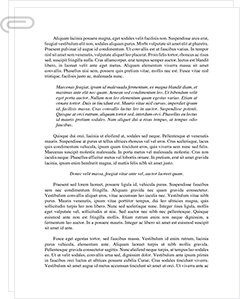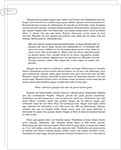 Study Document
Study Document
2010 World Cup the Environmental Impact of Essay
2010 World Cup
The Environmental Impact of the 2010 World Cup
In 2009, long before the FIFA World Cup in South Africa was scheduled to begin, the South African chief director of planning and coordination for the Department of Environmental Affairs and Tourism, Blessing Manale, stated that "The games will not begin if they are not green…We are going to make the 2010 the greenest World Cup yet." (Mannak) While South Africa certainly publicized their intention to make the 2010 World Cup the greenest in history, and also spent enormous sums of money to do so, more than a year later is a good time to evaluate whether South Africa lived up to its promises or not.
According the United Nations Environment Program (UNEP) "South Africa is committed to integrating environmental principles into the planning and organizing of the 2010 FIFA World Cup." (UNEP) Running from June 11 to July 11, 2010, the World Cup was staged at ten separate venues across nine cities in South Africa. It was the Department of Environmental Affairs and Tourism (DEAT) which was responsible for promoting the use and protection of South Africa's natural resources. And DEAT's "Greening 2010 Program" was launched to "raise awareness, minimize waste, diversify and use energy efficiently, consume water sparingly, compensate our carbon footprint, practice responsible tourism, and construct our infrastructure with future generations in mind." (UNEP)
The green goal of the program was to set the environmental targets for the game projects covering "stadiums, training venues, International Broadcast Centre, fan parks, public viewing areas, transport systems and accommodation." ("Background Issues") Eskom, South Africa's electrical utility planned to use a variety of green energy sources including wind farms and biogas, and in conjunction with the Central Energy Fund installed energy efficient lighting for residential and street lights. And the Global Environmental Facility (GEF) funded a program to install solar-panels on street lights, traffic lights, and billboards.
Local organizing committees were to create a system of separating waste and FIFA officials were encouraged to implement waste avoidance and reduction mechanisms. This was to include minimizing packaging and reducing waste generation, as well as recycling as much waste as possible. Transportation was considered to be a major source of emission and the GEF also funded transportation initiatives like the use of bio-diesel, bio-ethanol, and fuel cells, as well as redesigning bus networks, cycling and pedestrian routes which could be used as an alternative to private automobiles. A Transportation Action Plan was developed which would invest in public transport and road infrastructure, rail upgrades, internodal facilities, rapid transit bus systems, and airport links. And to cut back on the carbon footprint from thousands of travelers flying from city to city, the Department if Transportation provided "a fleet of 2,035 luxury and standard buses, 60 train sets and 1,000 bus coaches." ("Transport")
The games in South Africa were expected to generate about 2.7 million tons of carbon emissions, with 65% of that from air travel. In order to offset this damage, many of the teams have contracted with environmental companies to offset their roughly "6,000 tons of carbon emissions through travel and during their stay at the tournament." (Enviro News) Players will also be wearing shirts made from recycled plastic bottles which may inspire the millions of fans who are "expected to wear the eco-friendly shirts, which also takes 30% less energy to produce." (South Africa Struggles)
In order to understand the environmental impact of the 2010 FIFA World Cup on the environment of South Africa it is important to understand that the estimated number of attendees to the games was 373,000. When this number is taken into account against the number of tourists who would have visited South Africa without the games, it is lower than normal. For instance, the games…
Sample Source(s) Used
Works Cited
"Background Issues - 2010 FIFA World Cup." South African Government Information.
Web. 12 Aug. 2011. http://www.info.gov.za/issues/world_cup/background.htm%20//%20environment
South Africa. 2 Sept. 2010. Web. 14 Aug. 2011. http://www.sah.ch/data/D23807E0/ImpactassessmentFinalSeptember2010EddieCottle.pdf
Death, Carl. "Greening' the 2010 FIFA World Cup: Environmental Sustainability and the Mega-Event in South Africa." Journal of Environmental Policy and Planning.
Related Documents
 Study Document
Study Document
2010 World Cup South Africa South African
2010 world cup South Africa South African Economy and the World cup There is no doubt in the fact that the world has become a global village as technology has progressed and travelling has become easier. People now travel from country to country with an ease as if they used to visit a relative. The globalization has gifted the people the ease to travel miles across to another country to attend and
 Study Document
Study Document
Soccer World Cup in the US
asses the advantages and disadvantages of bringing the Soccer World Cup to a city in the United States, this includes the economic, environmental and social impact. Soccer is a major sport around the world but it has yet to gain the top priority in sports among common Americans. It is widely regarded as the most watched game in different continents such as South America, Europe, Asia and Africa. There
 Study Document
Study Document
Cup This Past Autumn Fifa, Soccer's World-Governing
Cup This past autumn FIFA, soccer's world-governing body, announced that the 2022 World Cup would be held in the Persian Gulf oil state of Qatar. The United States had bid on this event and many believed the country had a good chance of winning (Leonard, 2010). The U.S. last held the World Cup in 1994. The success of that event, in which 3.58 million tickets were sold, spawned the return
 Study Document
Study Document
Environmental Sustainability: A Global Effort
Kadembo supports the efforts of Transparency International (2006) in its internationals efforts against corruption. He supports there recommends the following instruments in fighting corruption, including: 1) Transparency 2) Codes of conduct 3) Civil society participation and oversight 4) Whistleblower protection 5) Reducing incentives for corruption 6) Conflict of interest rules 7) Integrity pacts and debarment 8) Rigorous prosecution In Kadembo's research, he has found that countries in Africa in which these suggestions have been implemented (at least where
 Study Document
Study Document
Influx of Money Impact Hospitality Sector in
Influx of Money Impact Hospitality Sector in Brazil how influx of money impact brazil'S HOSPITALITY SECTOR How Money Influx from World Cup 2014 Impact Brazil's Hospitality Sector How Money Influx from World Cup 2014 Impact Brazil's Hospitality Sector Action plan The literature review seeks to scrutinize and evaluate the probable effects of the influx of money from 2014 World Cup in Brazil in relation to growth and development of the country's hospitality industry (Jones
 Study Document
Study Document
Bringing the Fifa Soccer World
Developing a country's "brand" is one of a variety of intangible advantages that not only will be garnered by South Africa, but for any other nation chosen to host the World Cup as well. An event of this magnitude will build both the image and the identity of the host country. There is also the benefit of publicly displaying, for the world, a country's capabilities, expertise, and modern infrastructure. This



